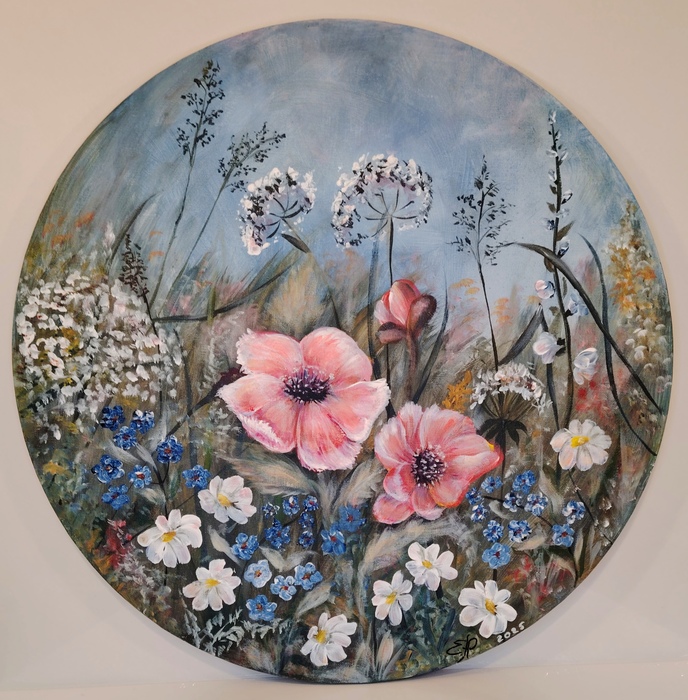20.12.25
THE AWAKENING OF THE WORD
posted by Stephen NicholasThe Awakening of the Word By Yusuf Parwaaz (On “Sukhan Jaag Raha Hai” – The Poetry Collection of Stephen Nicholas Ozor) Before introducing Sukhan Jaag Raha Hai (“The Word is Awakening”), it feels essential to offer a brief portrait of its creator, Stephen Nicholas Ozor —a man whose arrival in the world of letters is nothing short of a vibrant artistic declaration. His debut collection is not merely a gathering of poems; it is the announcement of a voice that has found its moment, its maturity, and its light. The essence of his poetry may best be approached through these opening lines: The poet’s word is waking, A song of awareness rising. Where the light of verse begins to glow, Even the darkness retreats, slowly, quietly. Ozor has been writing for many years. I first encountered his poetry in 1998 in the Karachi literary magazine Jafakash. Thereafter, he disappeared from the public literary scene—though he certainly never ceased to write. His commitment to craft endured; the creative flame never dimmed. And today, that perseverance has culminated in the collection now in your hands. Producing Sukhan Jaag Raha Hai has been a long journey for him. It is the poetic diary of his artistic evolution—his thoughts, convictions, emotions, and sensibilities rendered with striking clarity. The collection reflects not only his love for poetry but his unwavering devotion to the creative process. Stephen Nicholas Ozor is a man of many gifts. He is simultaneously a poet, a stone-carver, a sculptor, and a painter—each discipline practiced with remarkable finesse. He carries within him several artists at once, and navigates all of their identities with harmony and grace. He also holds a place of distinction: he is recognized as the first Pakistani Christian sculptor, honored with awards and accolades in his field. His artistic journey in sculpture continues to expand, and I believe international recognition is not far on the horizon. As a painter, too, he is exceptional. My first personal acquaintance with him grew from his artwork—he designed the cover of my Punjabi poetry collection Akkhar Akkhar Bolay, a piece whose beauty compelled my admiration. Nicholas Ozor is also well-versed in the craft of publishing and is capable of producing refined literary work with his own hands. Beyond this, he is an established poet in both Urdu and Punjabi. My impression of his multi-layered artistic personality can be summed up in these humble lines: Stephen Nicholas Ozor —sculptor, poet, painter, A vision reshaped by modern thought. Lines, angles, points—his lifelong treasure, A radiant brilliance lighting the chambers of his heart. Now, I turn my attention to his poetry in Sukhan Jaag Raha Hai. The book is divided into three sections: Ghazals, Nazms, and Quatrains. Each segment carries its own significance, and each is worthy of deep reflection. Readers will inevitably find themselves drawn into a world of contemplation, emerging with a sincere appreciation for Ozor’s poetic voice. I am certain that after reading this collection, you will agree with my assessment: he possesses the rare ability to shape ideas, emotions, and experiences into a language both beautiful and alive. Nicholas Ozor observes life with an attentive, perceptive eye. His poetry reflects this sensitivity—he studies the world around him with depth and intuition. Consider, for instance, the gentle simplicity of these lines: Flowers opened slowly, softly, And you too came into my life—slowly, softly. Love, compassion, and human connection form the heart of his poetry. He knows the ecstasy of union and the burning solitude of separation. Sunlight and shadow, joy and grief—all become elements of life’s natural rhythm. He rejects negativity, choosing hope as his companion and love as his compass. Perhaps that is why he has kept his life aligned with grace and serenity. To him, love is life’s foundational truth, and he raises a steadfast voice against hatred and bitterness. He writes of love’s beginnings and endings in this way: When love is new, every delight is new, Every stop along the road, a wonder. But when fidelity cools into ash, Fresh flames rise from forgotten embers. He continues tenderly: In trying to forget you, No remedy, no refuge remains. Nicholas Ozor welcomes the constant transformations of daily life. He moves through a world where social norms, scientific landscapes, religious thought, economic patterns, and political realities are all changing rapidly. He stays attuned to them, yet holds firmly to the dignity of the human spirit. A poet of modern sensibilities, he uses language that is sensitive, lucid, and sincere. His verse reflects the emotional urgency of contemporary life: My features begin to fade, Yet I shall celebrate my decline with ceremony. His nazms (Poems) are purposeful and profound. With simple, graceful diction, he constructs poems that reveal the richness of his intellect and imagination. Many of these pieces—Abr-e-Gurezan (The Reluctant Cloud), Gaon ka Manzar (Village Scene), Kham Khiyali (Idle Fantasy)—are impressive contributions to modern Urdu poetry. For indeed: The masterpiece forever sleeps, But the artist’s face glows within it. The final section of the book—the quatrains—is equally enchanting. These short pieces shimmer with originality and insight, bearing witness to the maturity of his craft: Sometimes my lashes tangled, and sight was lost, Sometimes night’s darkened veil stole recognition away. Let me meet myself again, O Circle of Beauty, For in the shadow of pleasing the world, I lost my solitude. And then, with disarming simplicity: I think I may drown now— The weight upon my heart is heavy. For no good reason they maligned love, When love is simple, and beauty plain. In Sukhan Jaag Raha Hai, the language remains clear, accessible, and close to everyday speech—yet crafted with care so that no reader stumbles, and every thought flows effortlessly. This collection is a fine and meaningful addition to Urdu literature. I invite you to read Sukhan Jaag Raha Hai. It will, without doubt, satisfy your literary spirit as deeply as it did mine. With this prayer, I conclude: May God’s grace be upon us all. Yusuf Parwaaz California, America














